Return to the Archive
Into the realms of Artificial Intelligence
In the mellow warmth of September 2023, I, in my capacity as the Director of the Museum of Architecture at the Technical University Berlin, found myself in the unpretentious village of Mikoszewo, Poland. There, where the Vistula River gracefully concludes its journey into the arms of the sea, I stood, enveloped in the tapestry of history that is my life’s work. Each place I visit is akin to adding another vibrant thread to this ever-expanding historical narrative.

Mikoszewo, a place unassuming in its demeanour, held a discovery of considerable import. Our museum’s extensive collection includes a vast array of photographs from the era of 1890, showcasing the ‘Weichsel Durchbruch’. This was a project of Herculean proportions undertaken by the Prussian state, a bold attempt to bridle the Vistula’s wild spirit and thwart the threat of floods. Among these chronicles of human endeavour, one photograph captured my fancy: it depicted a mill, steadfast in its resolve, and the miller’s dwelling alongside, equally resilient in the face of time’s relentless march. For this was the place where I was afforded the privilege of my holiday abode. A young Polish family, with a commendable zeal and an eye for the historical, had meticulously renovated the miller’s house from the ground up. It now stands as a splendid starting point, a base from which one might embark on a journey to unravel the interwoven tapestry of nature and history that adorns this region.

As I delved deeper, a narrative, rich in legend and steeped in history, unfolded. The miller’s humble residence had once offered sanctuary to Queen Louise of Prussia in 1807, as she fled from Napoleon’s grasp towards Königsberg. The very walls of this domicile, if they were possessed of the power of speech, would narrate a tale of regal refuge amidst the upheavals of history.
Yet, the spectres of the past were not to be outdone. In 1945, this same tranquil spot bore silent testimony to the plight of German refugees, caught in their desperate flight from the Red Army’s relentless advance from East Prussia and other territories. Here, by the Vistula, they found themselves ensnared in a cruel deadlock, exposed to the merciless assaults of war. This was a poignant, albeit tragic, chapter in the annals of the Second World War, a conflict deeply rooted in the complexities of German guilt and remorse. Standing there, a mere stone’s throw from the Russian border, now an insurmountable barrier, I felt the heavy burden of history, a peculiar amalgamation of the past and the present.

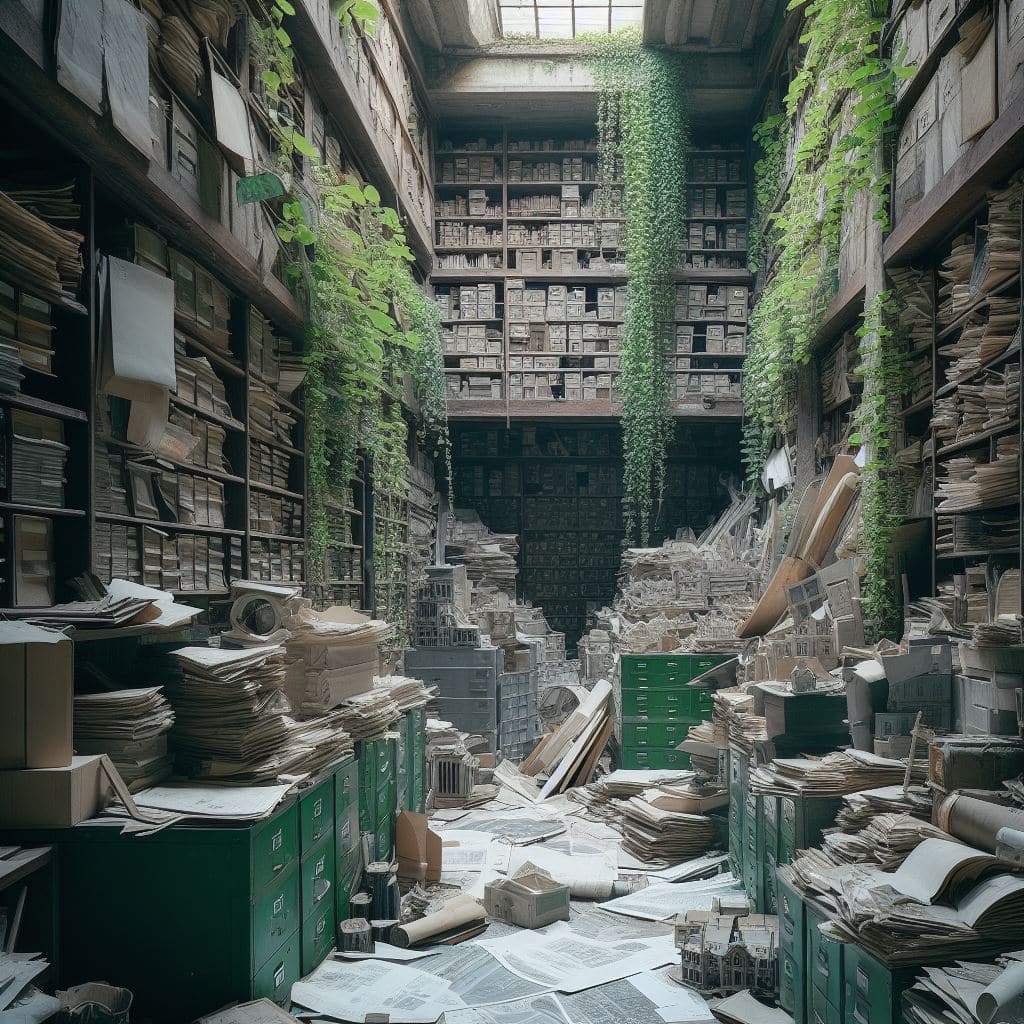
In my role as an art historian and archivist, my existence is inextricably intertwined with history. It is a perpetual dance with the ephemeral, a constant struggle to grasp the transient nature of not just places but of our very being. During this vacation, I embarked upon a new quest: to delve into the realms of artificial intelligence and image processing. Armed with DALL-E, I endeavoured to craft a series of images that explored these themes, a digital odyssey into the enduring resonance of history. But what subject ought I to choose? With what task was I to engage my partner in the cloud – this Artificial Intelligence? Perhaps the locale where I find myself each day? An archive, a museum? Yet, the outcome bore no resemblance to the sober, factual halls where the architectural museum safeguards its historical treasures. Instead, it was transformed into a monumental hall. How can Artificial Intelligence fathom what we humans secretly desire for the design of our archives?
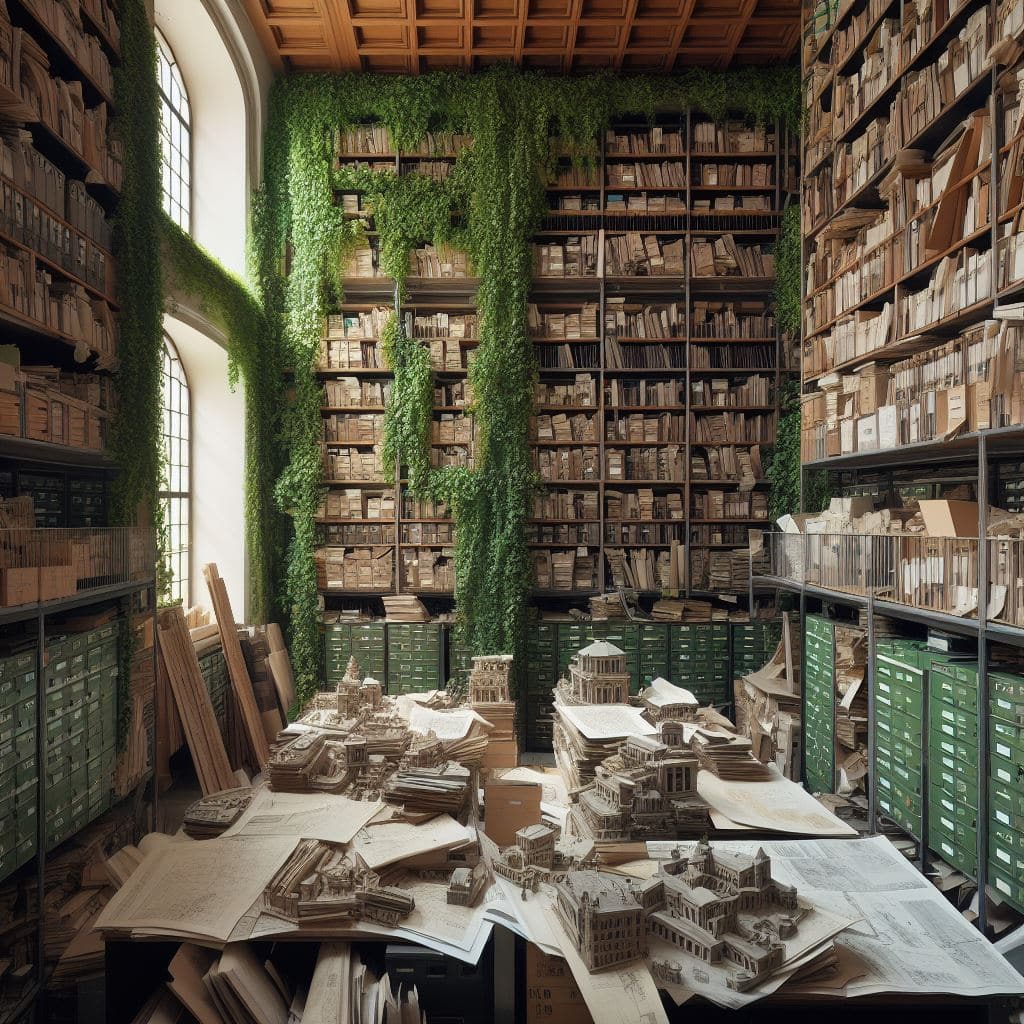
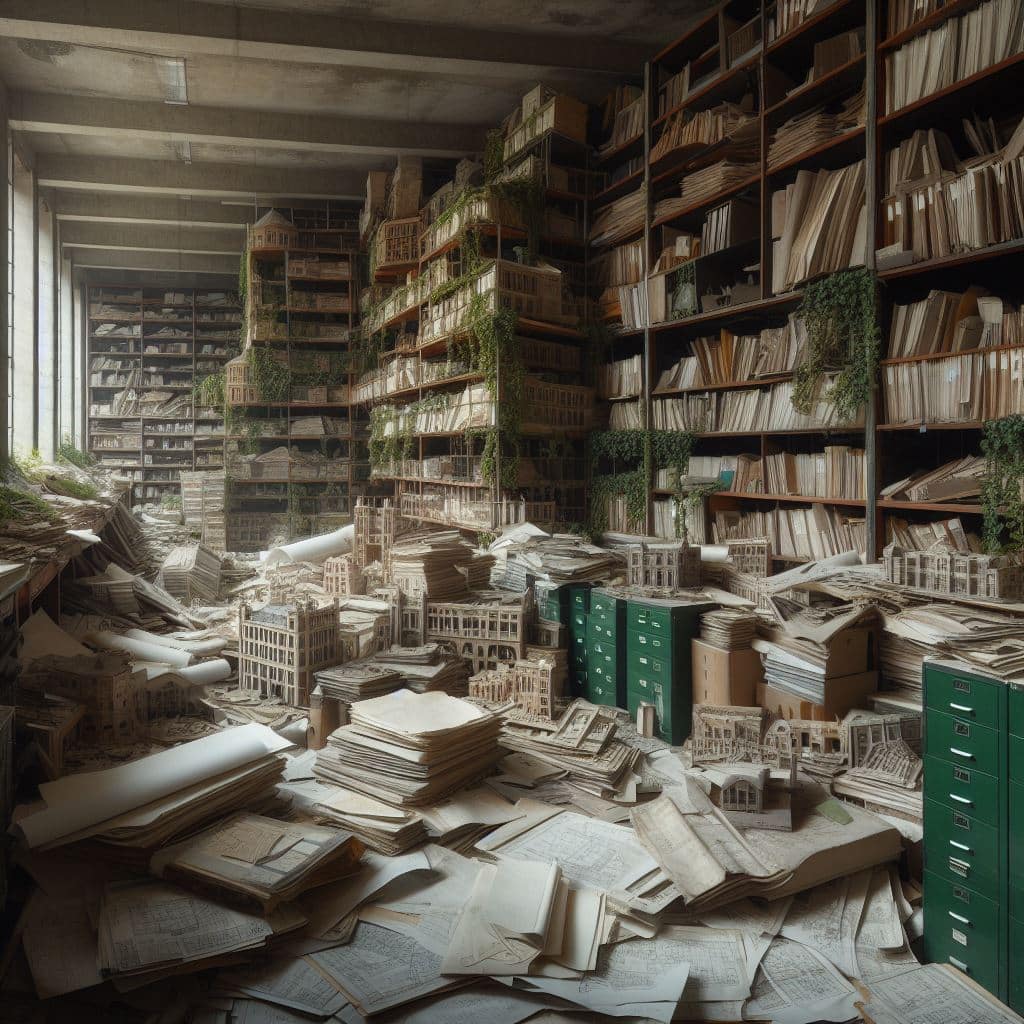
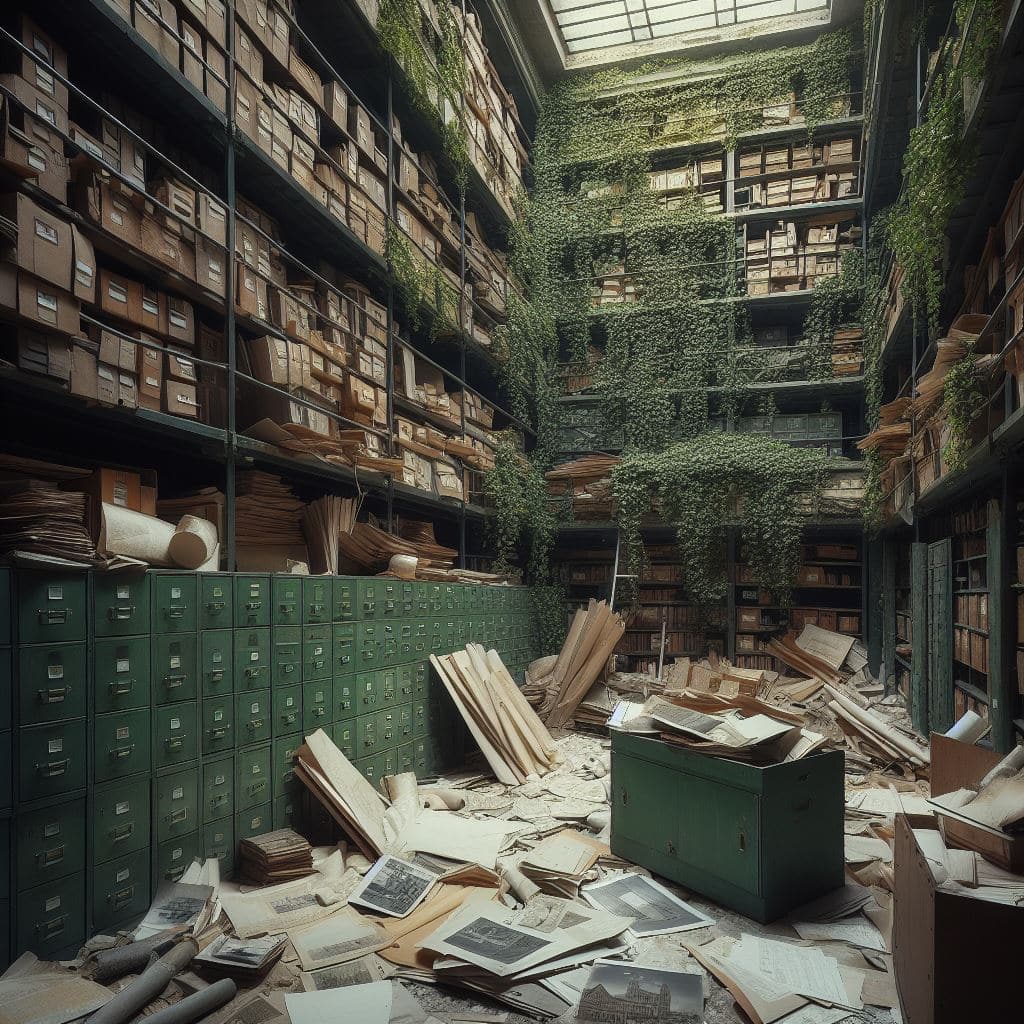
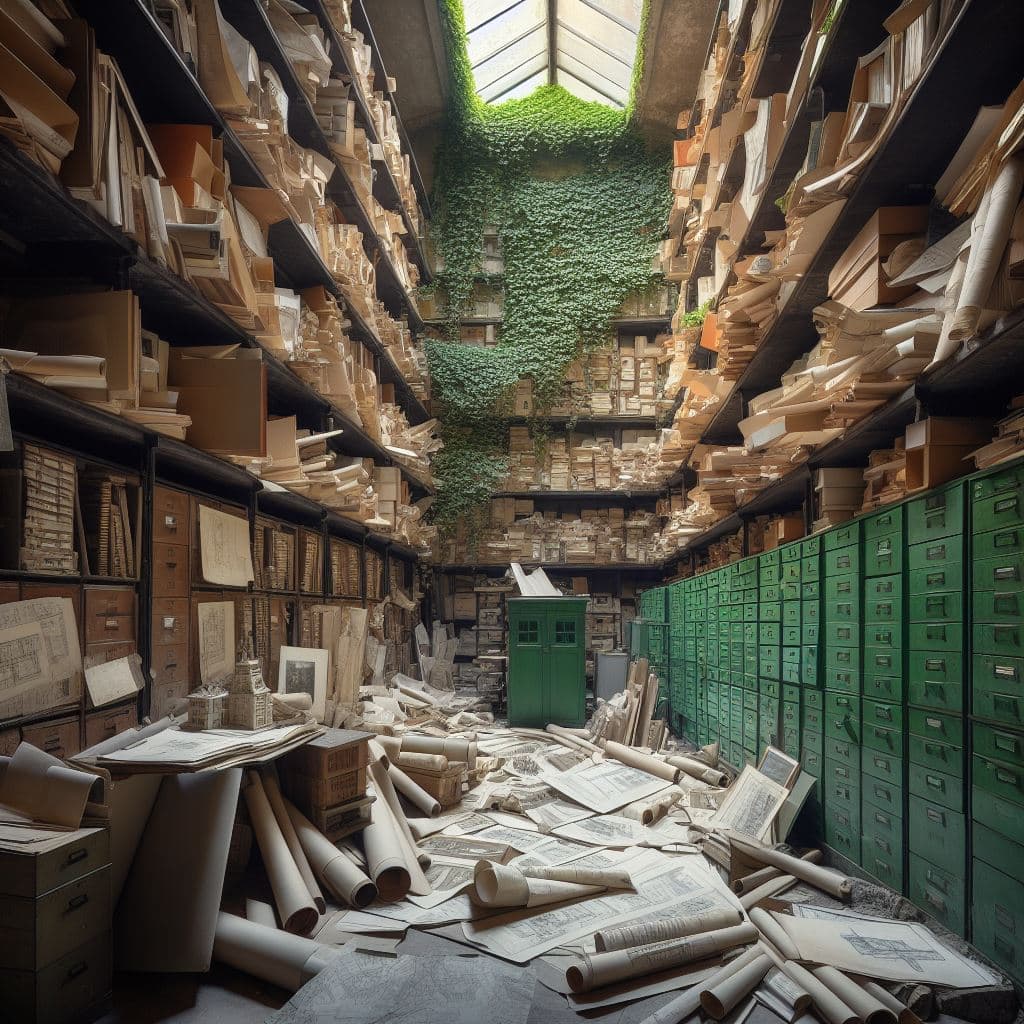
Then, I entreated it to depict the things as they might be, to portray the space as it would appear, had we abandoned it. What visage would it wear, should Nature seize the chance to reclaim this spot from mankind, after time has swept over everything? The result was images of disturbing beauty. Each image became a dialogue with the past, a digital stroke on the vast canvas of time, seamlessly blending the ancient with the modern, reality with imagination. In these creative moments, I found a sanctuary, a confluence of my historical passion and the limitless possibilities of the future.
Hans-Dieter Nägelke is an art historian and archivist, and the Director of the Museum of Architecture at the Technical University of Berlin, Germany.
Addendum
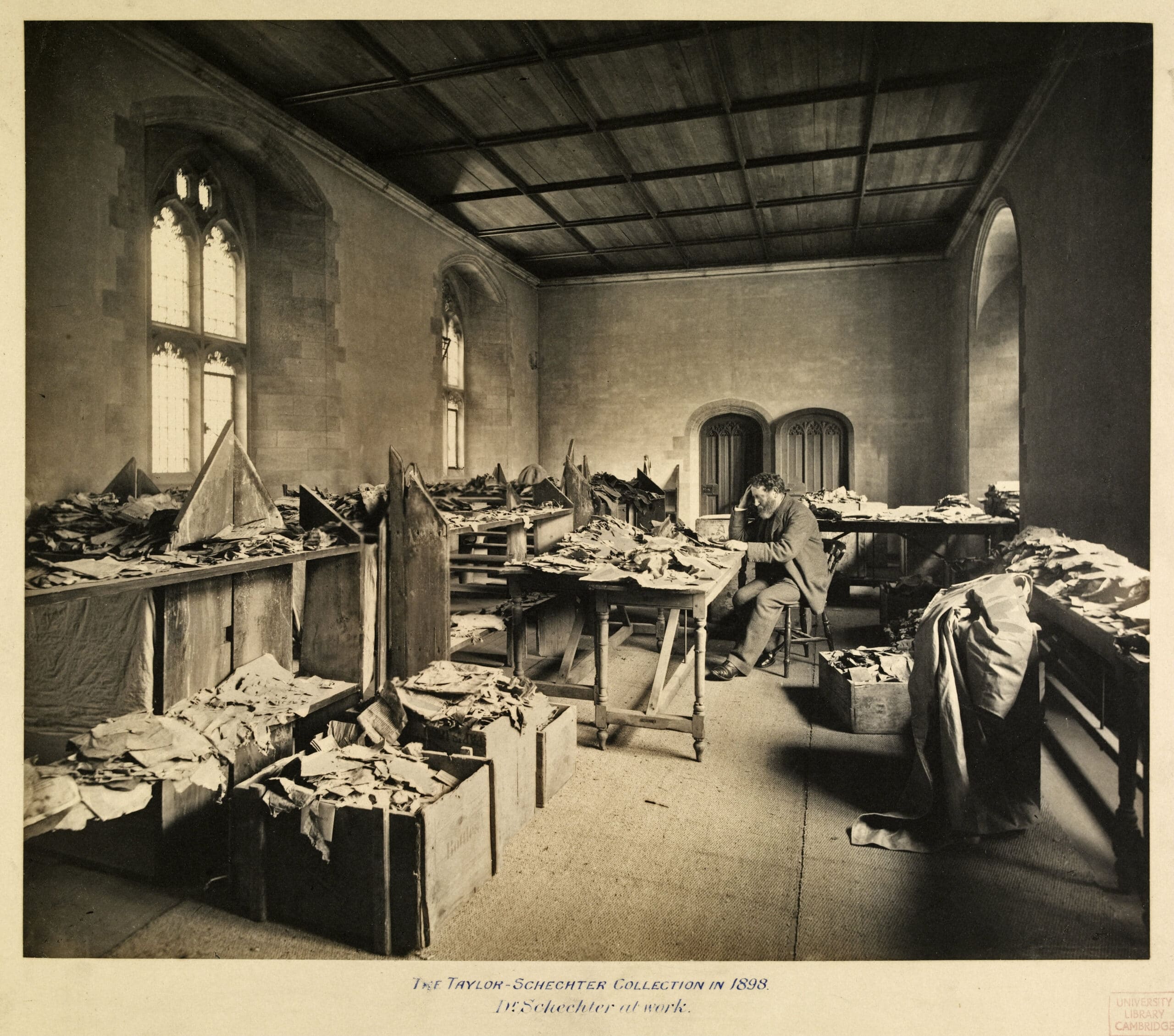
Adam Lowe, of Factum-Arte, suggested we add this wonderful image to this article.
